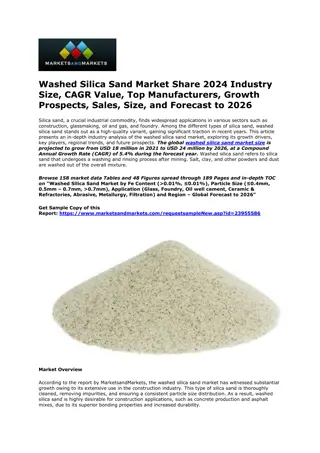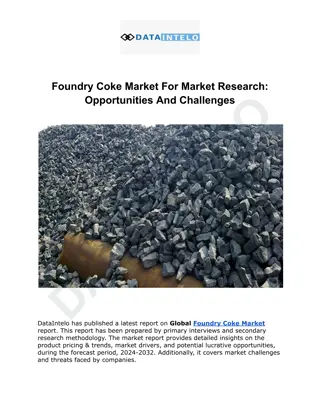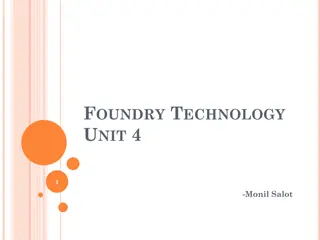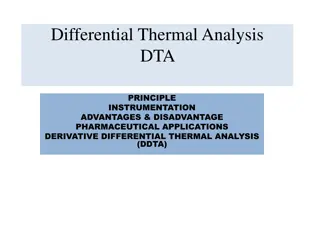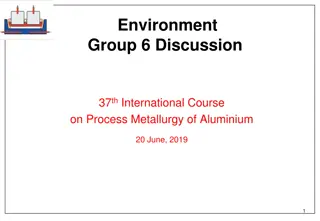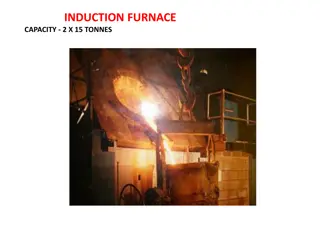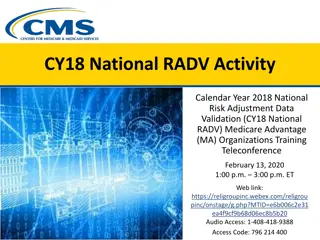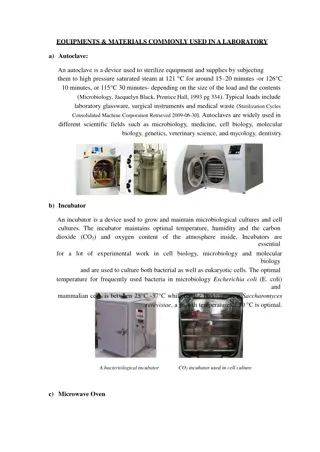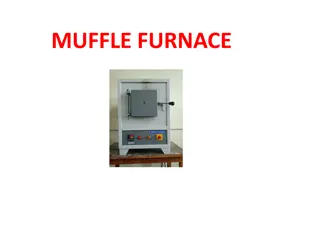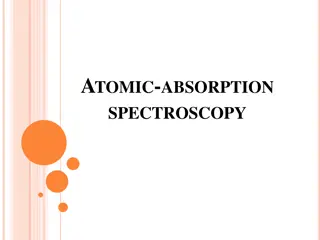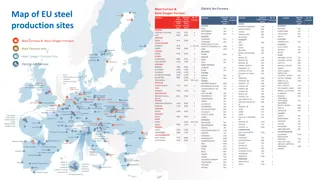Foundry Furnaces Overview
Lecture Ten - Cupolas, Direct Fuel-Fired Furnaces, Crucible Furnaces, Electric-Arc Furnaces, and Induction Furnaces are essential in the metal melting process. Cupolas are vertical cylindrical furnaces used for melting cast iron, while Direct Fuel-Fired Furnaces utilize natural gas for heating nonferrous metals. Crucible Furnaces melt metal without direct contact with burning fuel, ideal for nonferrous alloys. Electric-Arc Furnaces rely on electric arcs to melt steel, and Induction Furnaces use alternating current to produce high-quality molten metals.
Download Presentation

Please find below an Image/Link to download the presentation.
The content on the website is provided AS IS for your information and personal use only. It may not be sold, licensed, or shared on other websites without obtaining consent from the author.If you encounter any issues during the download, it is possible that the publisher has removed the file from their server.
You are allowed to download the files provided on this website for personal or commercial use, subject to the condition that they are used lawfully. All files are the property of their respective owners.
The content on the website is provided AS IS for your information and personal use only. It may not be sold, licensed, or shared on other websites without obtaining consent from the author.
E N D
Presentation Transcript
Lecture Ten Cupolas Vertical cylindrical furnace equipped with tapping spout near base Used only for cast irons Although other furnaces are also used, the largest tonnage of cast iron is melted in cupolas The "charge," consisting of iron, coke, flux, and any alloying elements, is loaded through a charging door located less than halfway up height of cupola
Cupola for melting cast iron
Direct Fuel-Fired Furnaces Small open-hearth in which charge is heated by natural gas fuel burners located on side of furnace Furnace roof assists heating action by reflecting flame down against charge At bottom of hearth is a tap hole to release molten metal Generally used for nonferrous metals such as copper-base alloys and aluminum
Crucible Furnaces Metal is melted without direct contact with burning fuel mixture Sometimes called indirect fuel-fired furnaces Container (crucible) is made of refractory material or high-temperature steel alloy Used for nonferrous metals such as bronze, brass, and alloys of zinc and aluminum Three types used in foundries: (a) lift-out type, (b) stationary, (c) tilting
Three Types of Crucible Furnaces (a) Lift-out crucible, (b) stationary pot - molten metal must be ladled, and (c) tilting-pot furnace
Electric-Arc Furnaces Charge is melted by heat generated from an electric arc High power consumption But electric-arc furnaces can be designed for high melting capacity Used primarily for melting steel
Induction Furnaces Uses alternating current passing through a coil to develop magnetic field in metal Induced current causes rapid heating and melting Electromagnetic force field also causes mixing action Since metal does not contact heating elements, environment can be closely controlled to produce molten metals of high quality and purity Common alloys: steel, cast iron, and aluminum
Ladles Two common types of ladles to transfer molten metals to molds: (a) crane ladle, and (b) two-man ladle
Additional Steps After Solidification Trimming Removing the core Surface cleaning Inspection Repair, if required Heat treatment
Trimming Removal of sprues, runners, risers, parting-line flash, fins, chaplets, and any other excess metal from the cast part For brittle casting alloys and when cross sections are relatively small, appendages can be broken off Otherwise, hammering, shearing, hack-sawing, band-sawing, abrasive wheel cutting, or various torch cutting methods are used
Removing the Core If cores have been used, they must be removed Most cores are bonded, and they often fall out of casting as the binder deteriorates In some cases, they are removed by shaking the casting, either manually or mechanically In rare cases, cores are removed by chemically dissolving bonding agent Solid cores must be hammered or pressed out
Surface Cleaning and Inspection Removal of sand from casting surface and otherwise enhancing appearance of surface Cleaning methods: tumbling, air-blasting with coarse sand grit or metal shot, wire brushing, buffing, and chemical pickling Surface cleaning is most important for sand casting Defects are possible in casting, and inspection is needed to detect their presence
Heat Treatment Castings are often heat treated to enhance properties Reasons for heat treating a casting: For subsequent processing operations such as machining To bring out the desired properties for the application of the part in service


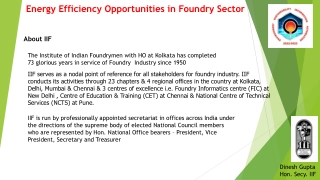
![❤[READ]❤ Deep Space Craft: An Overview of Interplanetary Flight (Springer Praxis](/thumb/21511/read-deep-space-craft-an-overview-of-interplanetary-flight-springer-praxis.jpg)




